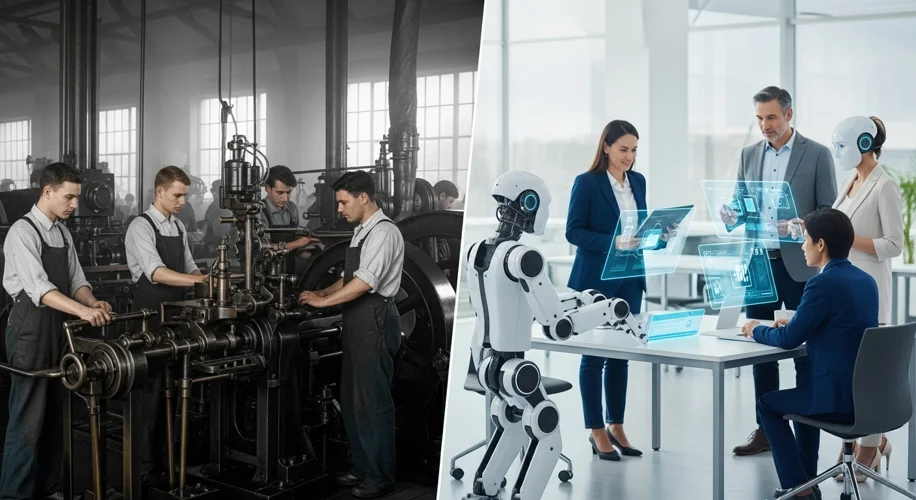It’s easy to feel a sense of unease when we talk about automation. The idea of machines taking over jobs, or fundamentally changing how we work, can be unsettling. But as someone who’s spent a career in technology, I find it helpful to look back. History, especially the history of industrial revolutions, offers us valuable lessons.
Think about the textile mills of the 18th and 19th centuries. The invention of machines like the spinning jenny and the power loom didn’t just speed up production; they completely reshaped society. Entire communities were built around these factories. Jobs that had been done by hand for generations were now done by machines, and people had to adapt. Skilled artisans found themselves competing with new, faster methods.
This caused disruption, no doubt. There were protests, concerns about unemployment, and a period of significant social adjustment. Yet, it also led to the mass production of goods that were once luxuries, making them accessible to more people. New jobs emerged – operating the machines, maintaining them, building the factories, and transporting the goods.
Then came the railroads. The expansion of rail networks in the 19th century was another massive technological leap. It connected cities, opened up new territories, and created entirely new industries. Think about the sheer number of people needed to build and operate those tracks and trains – engineers, conductors, track layers, station agents. But it also displaced jobs related to older forms of transportation, like horse-drawn carriages and canal boats.
What we see in both these examples is a pattern. Technology changes the nature of work. Some jobs disappear, some are created, and many more are transformed. The key takeaway isn’t that automation is inherently bad, but that adaptation is essential.
Today, we’re in the midst of another such shift, driven by artificial intelligence and advanced robotics. Just as the steam engine powered the first industrial revolution, and electricity the second, AI is becoming the engine of our current transformation.
We’re seeing automation in manufacturing, customer service, data analysis, and even creative fields. And yes, this means some tasks will be automated. But it also means new opportunities will arise. We’ll need people to design, develop, and manage these automated systems. We’ll need individuals who can work alongside AI, leveraging its capabilities to achieve things we couldn’t before. Critical thinking, creativity, and complex problem-solving – skills that are inherently human – will likely become even more valuable.
The challenge, as it always has been, is managing this transition thoughtfully. How do we support workers whose roles are changing? How do we ensure that the benefits of automation are shared broadly? These are not simple questions, and they require us to learn from the past. Just as societies adjusted to the looms and the locomotives, we must now find ways to adjust to the algorithms and the robots.
History teaches us that progress often involves disruption. But it also shows us that human ingenuity and the capacity for adaptation are powerful forces. By understanding the echoes of past industrial revolutions, we can approach the current wave of automation with a clearer perspective and a more hopeful outlook.

